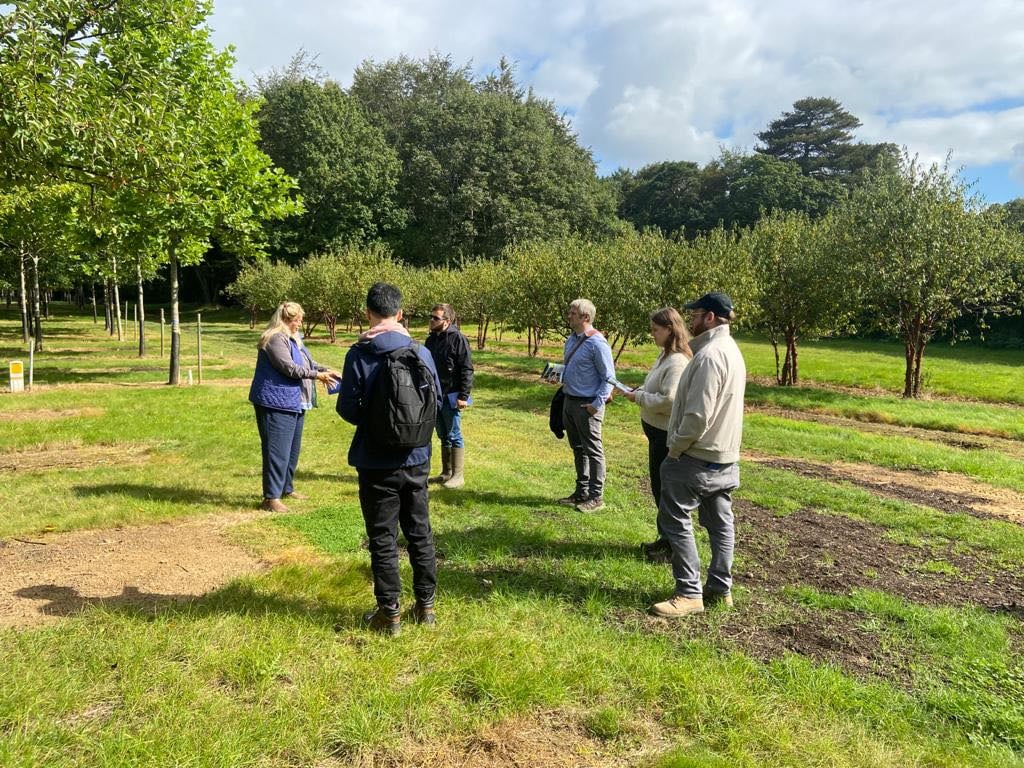Recently, we visited a local tree nursery as a team day out. It was a good experience, not only because we finally could get together as a team after a long period of lockdown, but also because of some key takeaways that I was able to learn from the perspective of tree growers. In particular, I realised the importance of tree selection and diversity. Picking a suitable standard, specifying the correct size of the tree pits, getting the final appearance right, as well as considering the overall biodiversity are all important. Additionally, a good biosecurity protocol can help prevent the introduction and spread of tree pests and diseases. Amid the changing climate, we already have a limited range of native species, so we can’t afford another species being threatened by pests.
We, as landscape architects, do not only design gardens although the public impression of what a Landscape Architect does is usually associated with this and planting. We design external spaces and would use all available hard and soft materials in a suitable palette to shape the space. Traditionally, aesthetics prioritise the decision making when selecting trees. There is a rising awareness of the environment and leading the paradigm shift of the decision-making process. For example, the urban tree manual has been produced for DEFRA by the Forestry Commission. (https://www.forestresearch.gov.uk/tools-and-resources/fthr/urban-tree-manual/ )
In this manual, the Forestry Commission proposes a useful decision process when planting trees, which includes selecting by function (or by species) and then selecting by diversity. Finally, the placement is determined by design. It tells us that tree planting is both art and science. In reality, landscape architects are often faced with budget pressure, and thus unwillingly reduce the number of new plantings and cut down trees that we should retain after rounds of value engineering. It is regrettable that we often cannot keep them but this could well be because of the inadequate recognition of the value of planting. In fact, the value of young new trees is significantly lower than the existing mature trees. Some local authorities, such as Waverley Borough Council, set out stricter requirements on the replacement trees. Tree officers can often request that the new planting compensates for not only the quantity lost but also for the size (value) lost by insisting on a size for new trees.

So what should we do to deal with budget pressure and enhance the environment at the same time? Personally, I think good collaboration is key. An open conversation between the client and the design team at the early stage of the project would be good to get the collective idea of tree planting. Arborists and ecologists are often not involved in the project early enough. An arboricultural or ecological opinion could be vital to driving design decisions, to preserve the local habitat and existing vegetation if they are in good condition.
While we mentioned collaboration, forming an evidence base for our selection would justify what we are doing. This makes our tree planting more a rational approach than a random sprinkling. The Trees and Design Action Group (TDAG) has been contributing their broad knowledge base to develop guides for practitioners and policymakers. This is evidence-based information, with practical advice and case studies to inform decision-making on urban trees. Local nurseries and The Woodland Trust also have selection guides for native trees. Using well-researched guidance could provide objective arguments and support effective communication between stakeholders. The design team including the client, engineer and architects should understand the rationale and work together to build a sustainable environment.
- TDAG selection guide (https://www.tdag.org.uk/our-guides.html)
- Woodland trust guide (https://www.woodlandtrust.org.uk/plant-trees/advice/choose/)

The UK is hosting the 26th UN Climate Change Conference of the Parties (COP26) at the Scottish Event Campus (SEC) in Glasgow from 31 October – 12 November 2021. The threat of climate change is clear and poses danger to every living creature and plant on this planet. It is a good initiative to make landscape practitioners, including me, think about what landscape architects could deliver and help our planet. The UK government together with industry leaders pledged to reduce carbon emission by 2030. The Landscape Institute is here to make sure our voices are heard by the government and urge the authority to take natural capital into account when making a decision. At the time of writing, we now know biodiversity net gain has been introduced in the latest environment bill (to be the new environment act as it passes through parliament).
Now, taking a step back, from the day-to-day basis, what could we deliver to help? Thorough research has been done by the professionals and it is time for us to take action – pick up the guides now and take action!
